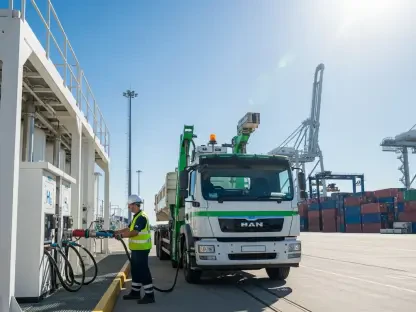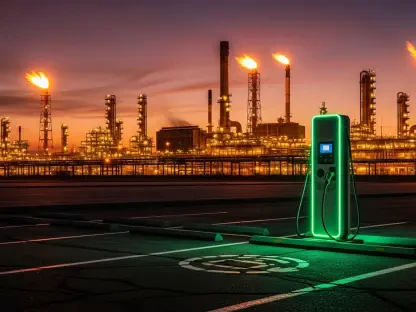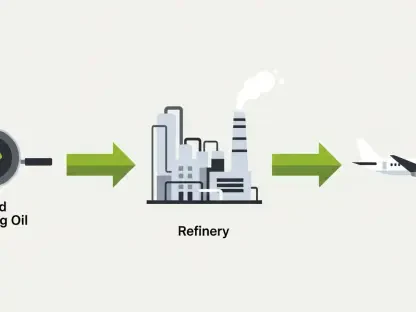As global digital expansion continues to advance at an unprecedented pace, the demand for data centers has surged, creating a significant energy challenge. This is especially pronounced in the Pennsylvania region, where PPL Corp. and Blackstone Infrastructure have joined forces to address the anticipated energy demands driven by data center developments. The initiative aims to build gas-fired power plants predominantly in Pennsylvania and across the broader PJM Interconnection region. Such efforts are necessary due to the rising need for artificial intelligence capacities and the subsequent increase in energy requirements.
Strategic Advantage in Energy Solutions
Assessing the Collaboration’s Potential
PPL Corp.’s collaboration with Blackstone Infrastructure stands out due to the strategic advantages outlined during the Pennsylvania Energy and Innovation Summit. This collaboration is slated to be pivotal in adjusting the energy landscape to meet growing data center demands. The partnership intends to ensure dependable energy supply by investing in new gas-fired power plants that support the burgeoning data center market. This sector is propelled by an escalating demand for artificial intelligence processing power, echoing the rapid growth of digital infrastructure.
However, it is important to note that PPL Corp. is navigating nascent stages with no concrete energy service agreements yet secured with hyperscale counterparts. The groundwork is extensive and involves meticulous negotiations related to land, pipeline placements, and turbine installations. Current estimations point towards 2030 as the earliest feasible operation date for these plants, signaling a substantial lead time for implementation. The venture’s strategic design sees PPL Corp. retaining a majority stake at 51%, with Blackstone Infrastructure holding 49%, underscoring the financial commitment and shared vision of both entities.
A Financial and Infrastructural Commitment
There is a substantial financial undertaking involved in meeting the projected shortfall in the Pennsylvania service territory alone, where a 6 GW energy shortfall has been predicted over the next five to six years. This is in response to an estimated 13 GW rise in data center load. Meeting this challenge will require an investment of approximately $15 billion for constructing the necessary combined-cycle gas-fired units. Moreover, Blackstone’s plan to invest $25 billion highlights an extensive financial commitment to supporting related infrastructure, including QTS-backed data centers. This planned expenditure illustrates the anticipated significant increase in energy infrastructures necessary to accommodate the rising demands.
These financial efforts underscore the seriousness with which PPL Corp. and Blackstone Infrastructure approach the evolving energy demands. Their strong stance is not just a reaction to immediate pressures but a proactive step to secure future energy needs. The expected increase in data centers illustrates a significant rise in energy requirements that will necessitate diverse solutions, integrating traditional and alternative energy sources.
The Broader Context of Industry Trends
A Shift Towards Diverse Energy Sources
The rapid escalation of data center operations is a theme resonating across the industry. Projections suggest a threefold increase in data center energy load could reach around 80 GW by 2030. This explosion in demand cannot be met by traditional natural gas solutions alone, prompting considerations for renewable energy integration and nuclear power. Although nuclear energy’s broader deployment is projected further in time, it could play a pivotal role in the early 2030s, marking a shift towards more sustainable energy solutions.
In tandem with traditional gas-powered solutions, other segments of the energy sector are making strides in supporting digital infrastructure growth. Constellation Energy Group’s significant investments aiming to boost nuclear capacity at its Limerick plant serve as an example. Additionally, existing coal-fired plants like Bruce Mansfield are being transitioned into sizable gas-fired facilities with integrated data center capabilities. These measures reflect a broader trend within the energy sector, focusing on diversified energy strategies capable of sustaining modern digital infrastructure growth.
Future Insights and Industry Responses
The initiatives undertaken by PPL Corp. and Blackstone Infrastructure represent a proactive industry effort to adapt to ever-expanding data center needs. With anticipated challenges associated with robust infrastructure demands, the industry response encompasses more comprehensive energy strategies. Increasing collaborations and investments testify to the growing awareness of matching energy supply to rapidly growing digital demands. This involves reevaluating current energy infrastructures and making the necessary upgrades and expansions to align with technological advancements.
The topics discussed during the industry summit, coupled with existing and upcoming ventures, chart a path of strategic adaptability to energy needs. This path not only garners immediate results but places these enterprises in a strong position for the eventual evolution of the broader energy landscape.
Paving the Path for Future Developments
As the global digital landscape continues to evolve at a rapid rate, the need for data centers has grown significantly, presenting a major energy challenge. This situation is especially evident in Pennsylvania, where PPL Corp. and Blackstone Infrastructure have teamed up to tackle the impending energy demands brought about by the development of data centers. They plan to construct gas-fired power plants primarily in Pennsylvania and throughout the wider PJM Interconnection region. These efforts stem from the increasing demand for artificial intelligence capabilities, which have led to a spike in energy consumption. The collaboration between these two entities is essential to address the energy needs of expanding digital infrastructure and maintaining the balance of energy supply and demand. Establishing these power plants is crucial to ensure that digital growth does not outstrip available energy resources, which is critical for both technological advancement and environmental sustainability in the region.









